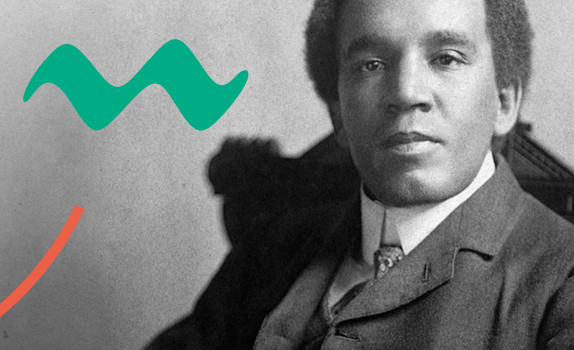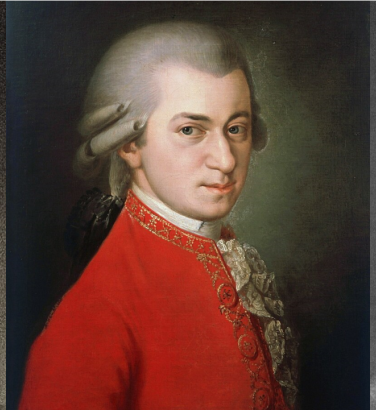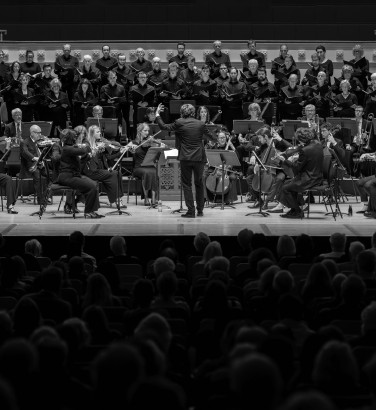
The first Black composers
9 Sep 2024
News Story
From left to right: Joseph Boulogne, Samuel Coleridge-Taylor and Louisa Melvin Delos Mars
The range of composers whose music we hear both live and in broadcasts is growing wider. Our awareness of female composers, for instance, has improved considerably since the turn of the century, with several long-neglected names coming to light. The championing of contemporary music, a key part of any orchestra’s remit, also ensures that concert programmes are far from limited to tried-and-tested classics. When it comes to different ethnicities, however, classical music is so dominated by its (generally European) heritage that non-Caucasian composers have historically struggled to make their voices heard.
October marks Black History Month, during which the SCO presents two concerts featuring the music of Samuel Coleridge-Taylor, probably the foremost Black composer of the late Victorian and Edwardian eras. Two of his Novelletten make up the first concert of our Digital Season (available to watch free of charge from 17 October, for one year), and his Violin Concerto is at the centre of the Orchestra’s concerts with violinist/director Anthony Marwood on 24-25 October.
Coleridge-Taylor was one of the earliest of Black composers to achieve mainstream recognition. He may no longer be a household name today, but in order to appreciate the scale of his achievement, it is worth rewinding the clock to see the impact of previous Black composers. The first of these is generally held to be Joseph Boulogne, who came to prominence in late 18th-century France. We should, however, bear in mind the possibility - if not the probability – that he was preceded by others whose names are lost to history.
People of African origin are known to have been employed at the royal courts of both Scotland and England at least as far back as the 15th century. It would admittedly be speculative to assume these included musicians, even taking into account the Tudor dynasty’s love of music, but supposing that music played no role in their distant homelands would be downright naïve. Music is, after all, a fundamental part of the human experience, and imposing our own understanding of it on other cultures can only be reductive – not unlike Boulogne’s reputation as the Black Mozart, or indeed Coleridge-Taylor’s as the African Mahler.
Much impressed by the lad's genius. He is a composer, not a music-maker. The music is fresh and original - he has melody and harmony in abundance, and his scoring is brilliant and full of colour - at times luscious, rich and sensual.
Perhaps it would be more accurate to describe Boulogne as the first Black composer of whom there is any established record. The child of a Creole mother and the owner of the plantation where she was enslaved, his mixed-race status appears to have opened some doors just as it closed others. We should of course be wary of any white saviour narrative, but Boulogne had his supporters – from his father, from whom he gained the title of Chevalier de Saint-George, all the way to the highest echelons of French royalty – and proved himself an exceptional swordsman and horse rider in his own right. While he was no stranger to racist abuse (including being set upon by people opposed to the abolition of slavery, on a visit to London in 1790), it is easy to overlook the skill with which he navigated the volatile political landscape of revolutionary France.
This is all before considering his musical credentials, which set a high bar for others to follow. His oeuvre encompasses orchestral works (including many concertos for his own instrument, the violin), a fine body of chamber music and half-a-dozen operas. Boulogne also bears the unusual distinction of having inspired a song on Beyoncé’s 2024 album Cowboy Carter, granting him an unexpected (if minor) place in popular culture.
The next century would see a trickle of Black composers, mostly in America. One notable exception is Charles Lucien Lambert, who moved from his native New Orleans (something of a haven for Black Americans at the time) to Paris before finally settling in Rio de Janeiro – a rich cultural mix only amplified by the Creole heritage he explored in his music. Biographical details for many of his contemporaries are scant by comparison, though we can infer that Francis Johnson’s improvisatory style of performance pre-empted jazz by several decades, while John Thomas Douglass’ opera Virginia's Ball is believed to be the first opera written by a Black American. Unfortunately this is a lost work, so all we know of it is the tantalising details provided in surviving documents. The same is true of the entire body of work (including 5 operettas) written by Louisa Melvin Delos Mars, one of the first Black American female composers.
The recognition of Black music – spirituals in particular – as a worthy basis for composition gained immeasurably from Dvořák’s encouragement when he first visited the US in the early 1890s. The Black musical community had in fact been instrumental in gaining his support: it was Harry Burleigh, one of his students at the National Conservatory of Music of America, who introduced Dvořák to Black American music, with benefits that proved to be mutual. On 24 January 1894, just over a month after the premiere of Dvořák’s New World Symphony, a concert was put on at the Conservatory which featured a nearly all-Black line-up of soloists. As the New York Herald put it, “bodies had been liberated but the gates of the artistic world were still locked” – an important step in terms of giving Black performers their due on the concert platform. In terms of composers, a further beneficiary of this performance was Maurice Arnold, another Black student of Dvořák’s, whose Plantation Dances went on to meet with considerable success, though they are little known today.
Back on the other side of the Atlantic, Samuel Coleridge-Taylor had shown promising musical talent as a child and, now in his mid-20s, he was fast making a name for himself. 1898 saw the premieres of both the Ballade in A minor (commissioned by the Three Choirs Festival, on Elgar’s recommendation) and Hiawatha’s Wedding Feast, a cantata which soon came to rival Mendelssohn’s Elijah and even Handel’s Messiah in terms of popularity. Remarkably, Hiawatha was published before its premiere, by which time Coleridge-Taylor had also been commissioned to write what would be the first of two sequels.
It may seem odd to us that a composer should set a Native American story to Black American-influenced music – the spiritual Nobody Knows the Trouble I’ve Seen informed Hiawatha’s overture – but this is in keeping with Dvořák, who had identified stylistic similarities between the two cultures’ music at the beginning of the decade. (For the record, a good deal of Scottish music shares the same roots.)
Coleridge-Taylor’s Violin Concerto dates from 1912, a supremely lyrical work from his 37th year – only it turned out to be among his very last, as he died of pneumonia a few weeks before its premiere. The concerto quietly dropped out of the repertoire within only a year (unlike Hiawatha, whose renown was just gathering pace), and was only revived in 1980. It's a sign of how neglected Coleridge-Taylor's music had become, but his star has deservedly been on the ascendant ever since. Among the most public recognitions of his importance came in 2013, when a portrait bench was unveiled in Croydon of three of that town's most famous residents: Samuel Coleridge-Taylor, Ronnie Corbett and Peggy Ashcroft, all selected by a public vote.

Coleridge-Taylor Violin Concerto
Respected British violinist Anthony Marwood takes the reins as both violin soloist and director in Coleridge-Taylor's sublime Concerto.
Related Stories
![Three men, the first two in 18th century formal dress (one in black and white, one in a red coat), the last in an old photo, smoking]()
What is a sinfonia concertante?
17 March 2025
We delve into the history of a hybrid genre ...![]()
The SCO Chorus on music for Lent
10 March 2025
With Easter just around the corner, we delve into perhaps the richest (and often darkest) choral repertoire of all ...![]()
The bassoon concerto
3 March 2025
For the last article in our concerto series (for now), we turn to an instrument too often dismissed as the orchestra's resident joker.



